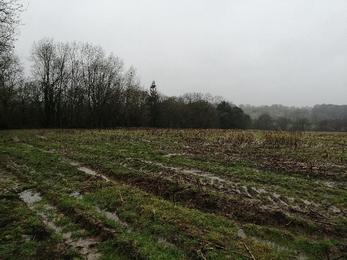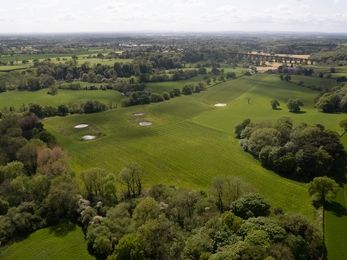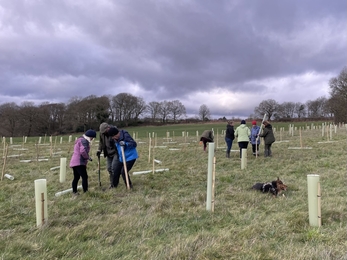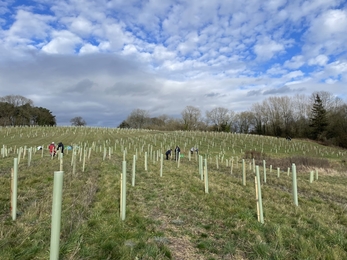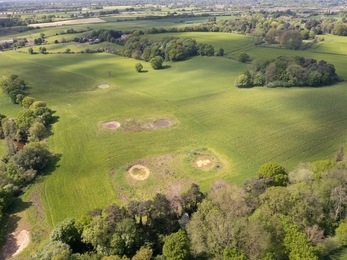It was a drizzly, cold, foggy day in November 2021 the first time I clamped eyes on the 50 acres of land recently purchased by Cheshire Wildlife Trust. Just outside of Holmes Chapel, perched next to the River Dane meant Saltersford was slap bang in the middle of our Lower Dane Living Landscape Area and only a mile downstream from our Swettenham Valley Nature Reserve. The position was perfect! They say location is everything, well, I really hoped so because I hadn’t quite prepared myself for the harsh reality of what lay out in front of me.
“Welcome to Saltersford Nature Reserve” my enthusiastic Line Manager uttered as we pulled up for the first time. Nature reserve wouldn’t be the first words that came to mind. There was no nature for starters. Saltersford is not a land of mystery and intrigue. She is, or should I say, was, a, big slab of agricultural land, which lays itself out before you as you enter through the gate. What you see is what you get! And what we got was a big L-shaped chunk of ex-maize ground, which surrounded a rectangle of bright green silage field on two sides, interspliced with some small patches of existing woodland. I looked at the site in trepidation. First, I noticed the stagnant pools of water sitting on the compacted ground, followed by the two-foot deep ankle breaking tractor ruts in the exposed soil and an old barrel of unidentified chemical. It was a stark reminder of the land’s previous use. I could feel my eyebrows raise, “Oh dear, this is going to be a challenge!”.
Thanks to our amazing supporters raising almost £74,000 through our Saltersford Farm Appeal, we were able to purchase and begin to rewild the land. After the purchase went through, our first priority was to carry out baseline surveys to establish our starting point: what did we already have? Our ecology team set to work and carried out botanical appraisals of the grassland, maize stubble, woodlands and perimeter hedge. We also took soil samples to assess the pH and nutrient levels as well as breeding bird surveys. The reading was bleak! Aside from the existing woodland the site was pretty devoid of wildlife.
Undoubtably a challenge, however this meant we had the potential to make an impactful difference to nature in this ecological ‘desert’.
All these surveys helped us create a design for the new reserve which would include a mosaic of different habitats offering the greatest benefit for wildlife. We would link up the remaining fragments of woodland with new trees and restore the silage grassland back to a traditional wildflower meadow. Ponds would be dug in the lower lying areas bringing water on to the site as well as creating large patches of scrub.
Once we had a plan in place, we were ready to begin the practical work. Our first job was to dig the ponds. Large excavators were used to dig six ponds on the wetter areas of the site, operated by drivers with the dexterity of ballet dancers. They delicately lined the ponds with clay, creating gentle sloping sides perfect for wildlife. Although the finished look resulted in something that resembled a bomb crater, after a few months and some heavy rain the ponds filled up.

